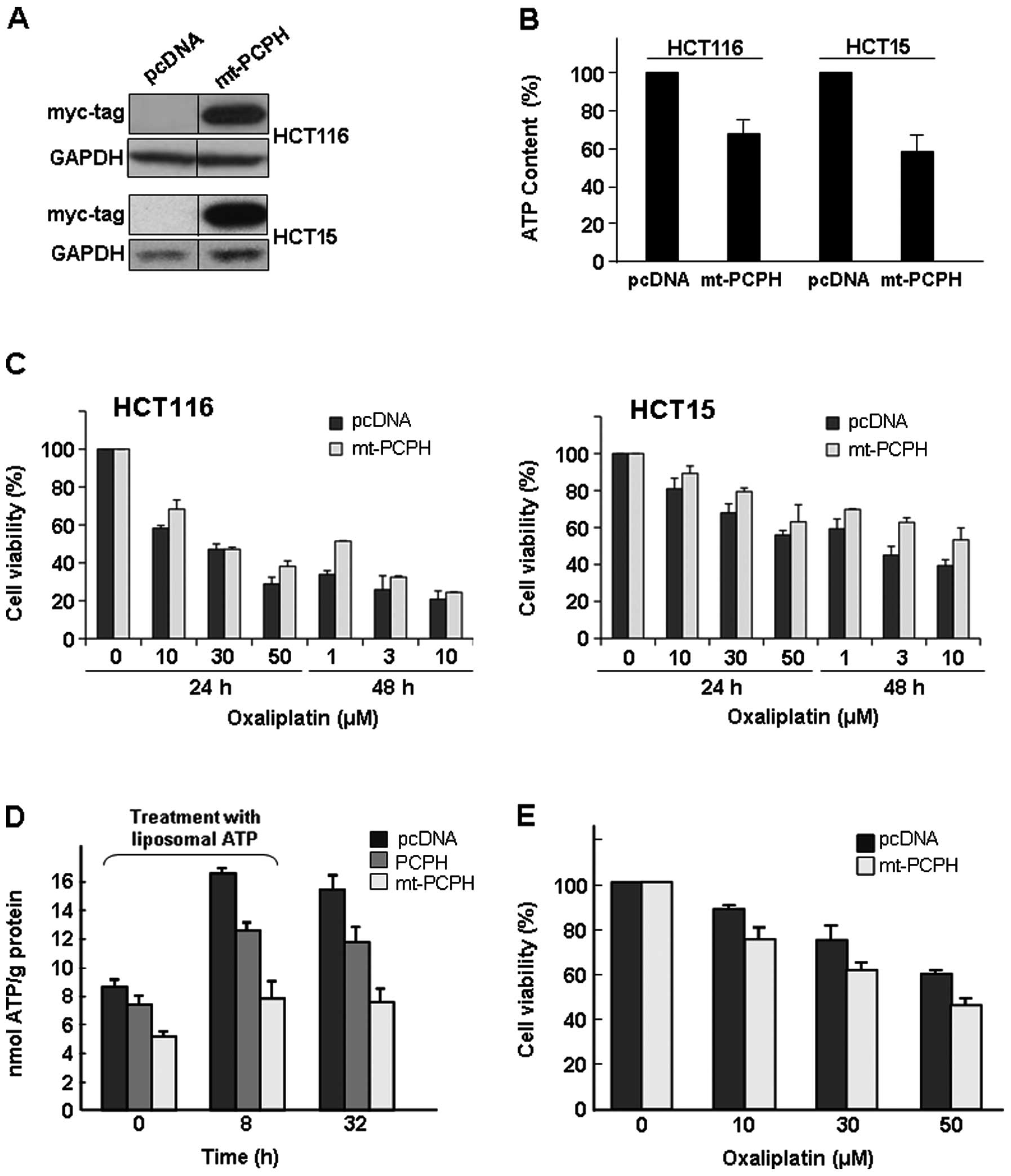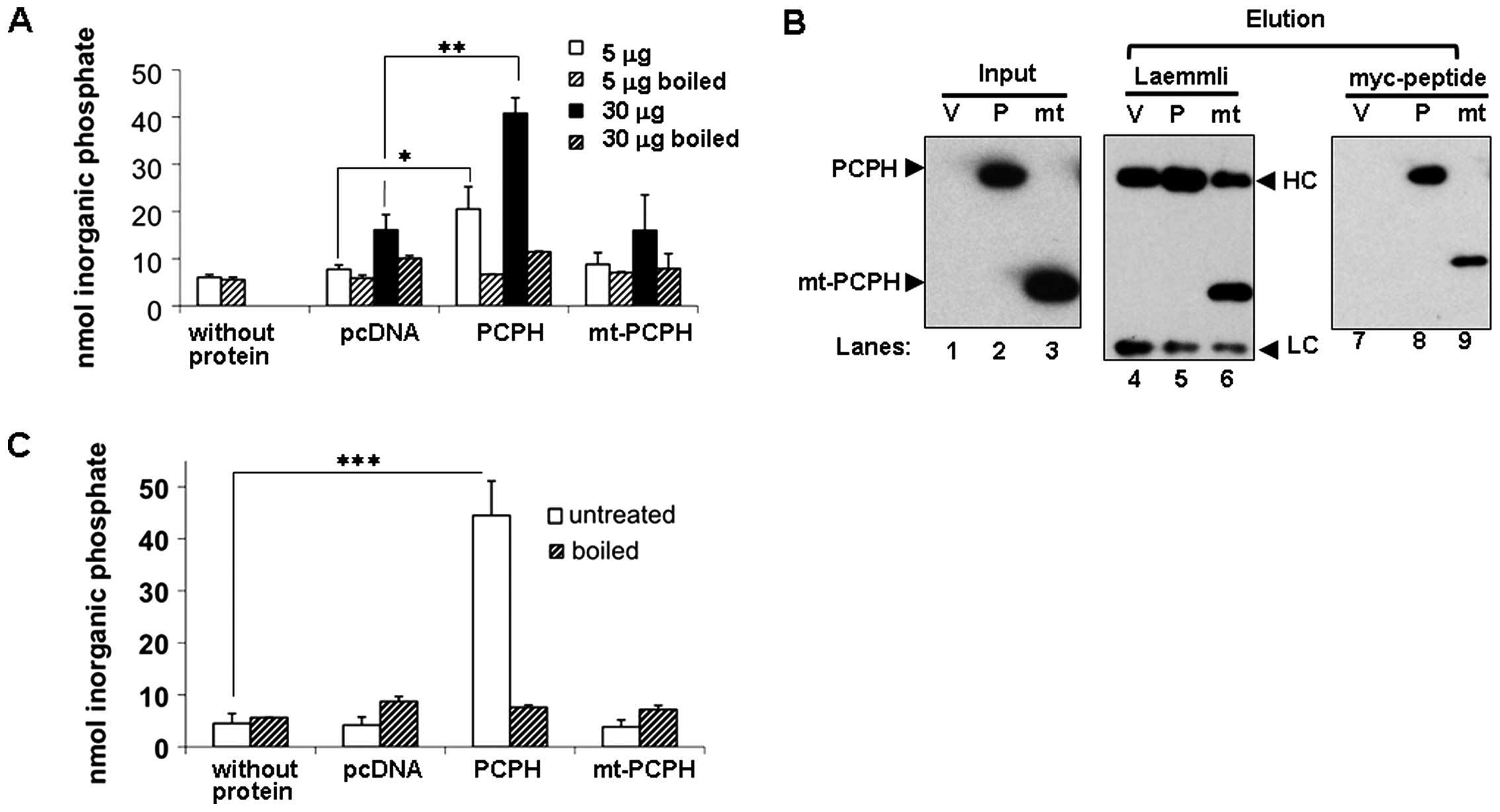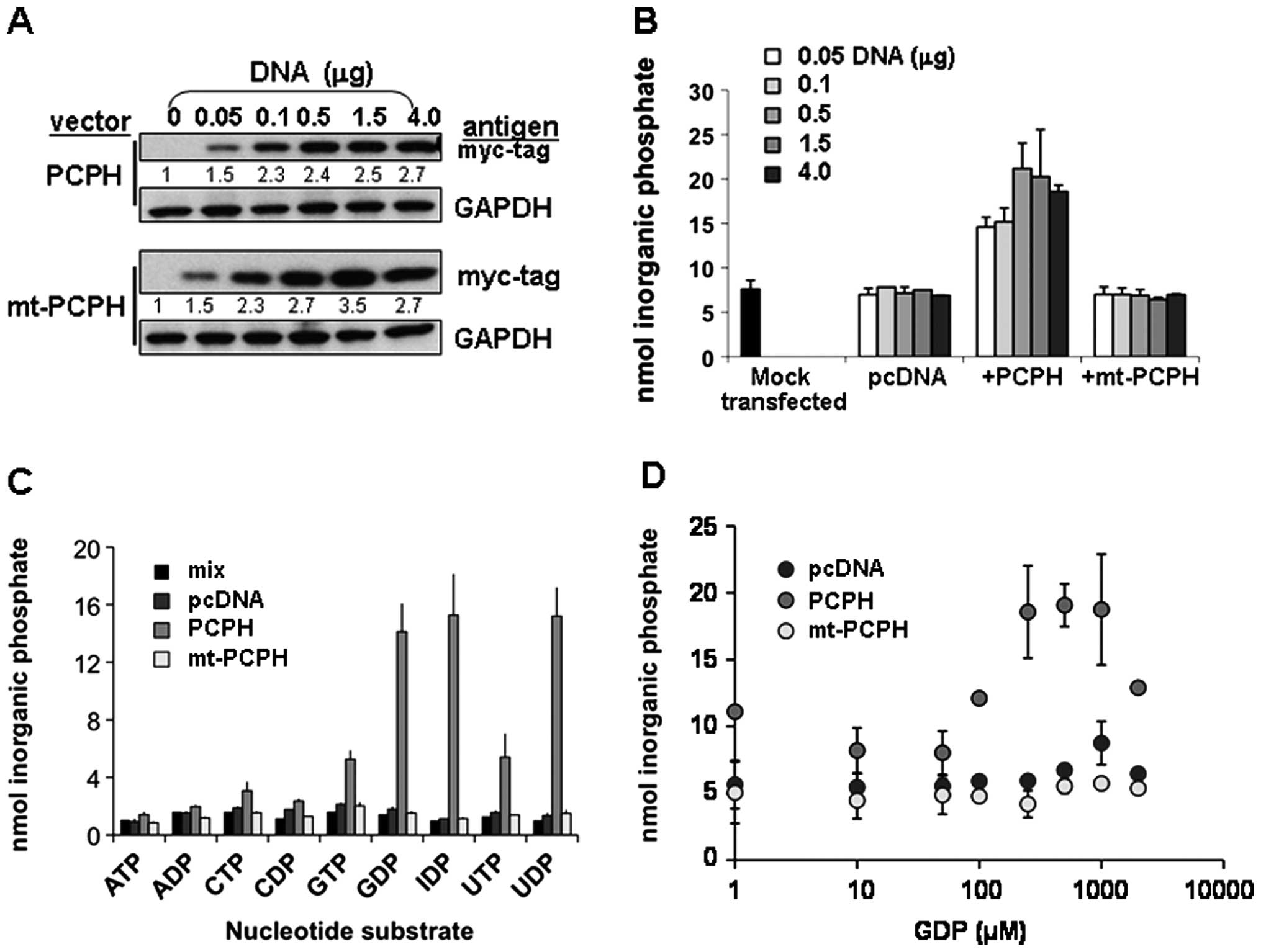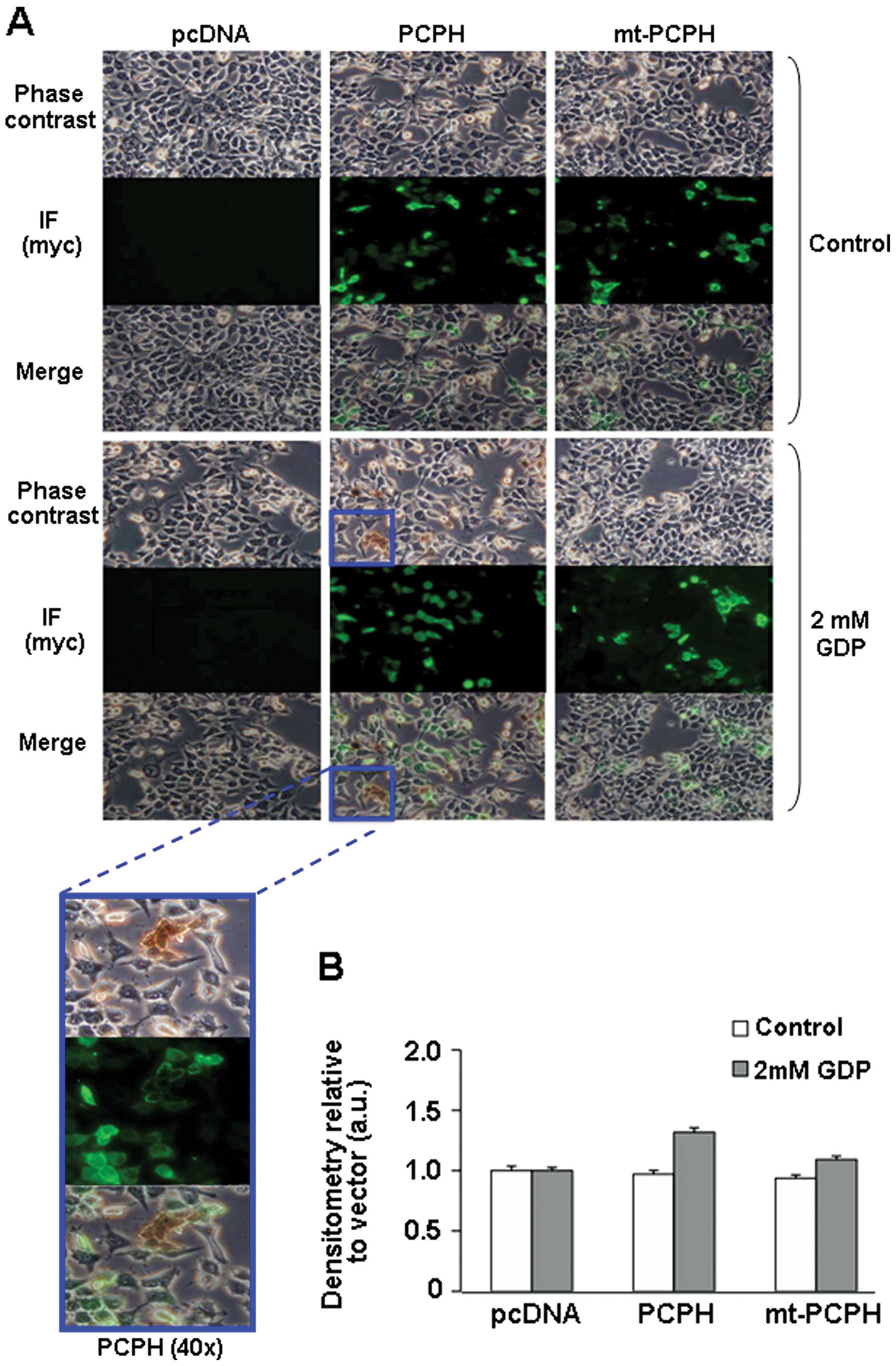|
1.
|
Cairns RA, Harris IS and Mak TW:
Regulation of cancer cell metabolism. Nat Rev Cancer. 11:85–95.
2011. View
Article : Google Scholar : PubMed/NCBI
|
|
2.
|
Warburg O: On respiratory impairment in
cancer cells. Science. 124:269–270. 1956.PubMed/NCBI
|
|
3.
|
Sattler UG, Hirschhaeuser F and
Mueller-Klieser WF: Manipulation of glycolysis in malignant tumors:
fantasy or therapy? Curr Med Chem. 17:96–108. 2010. View Article : Google Scholar : PubMed/NCBI
|
|
4.
|
Hardt PD, Mazurek S, Toepler M, et al:
Faecal tumour M2 pyruvate kinase: a new, sensitive screening tool
for colorectal cancer. Br J Cancer. 91:980–984. 2004.PubMed/NCBI
|
|
5.
|
Chan EC, Koh PK, Mal M, et al: Metabolic
profiling of human colorectal cancer using high-resolution magic
angle spinning nuclear magnetic resonance (HR-MAS NMR) spectroscopy
and gas chromatography mass spectrometry (GC/MS). J Proteome Res.
8:352–361. 2009. View Article : Google Scholar
|
|
6.
|
Walenta S, Chau TV, Schroeder T, et al:
Metabolic classification of human rectal adenocarcinomas: a novel
guideline for clinical oncologists? J Cancer Res Clin Oncol.
129:321–326. 2003. View Article : Google Scholar : PubMed/NCBI
|
|
7.
|
Robson SC, Sevigny J and Zimmermann H: The
E-NTPDase family of ectonucleotidases: Structure function
relationships and pathophysiological significance. Purinergic
Signal. 2:409–430. 2006. View Article : Google Scholar : PubMed/NCBI
|
|
8.
|
Enjyoji K, Kotani K, Thukral C, et al:
Deletion of cd39/entpd1 results in hepatic insulin resistance.
Diabetes. 57:2311–2320. 2008. View Article : Google Scholar : PubMed/NCBI
|
|
9.
|
Read R, Hansen G, Kramer J, Finch R, Li L
and Vogel P: Ectonucleoside triphosphate diphosphohydrolase type 5
(Entpd5)-deficient mice develop progressive hepatopathy,
hepatocellular tumors, and spermatogenic arrest. Vet Pathol.
46:491–504. 2009. View Article : Google Scholar
|
|
10.
|
Notario V, Castro R, Flessate DM, Doniger
J and DiPaolo JA: Frequent activation of non-ras transforming
sequences in neoplastic Syrian hamster cells initiated with
chemical carcinogens. Oncogene. 5:1425–1430. 1990.PubMed/NCBI
|
|
11.
|
Velasco JA, Avila MA and Notario V: The
product of the cph oncogene is a truncated, nucleotide-binding
protein that enhances cellular survival to stress. Oncogene.
18:689–701. 1999. View Article : Google Scholar : PubMed/NCBI
|
|
12.
|
Fang M, Shen Z, Huang S, et al: The ER
UDPase ENTPD5 promotes protein N-glycosylation, the Warburg effect,
and proliferation in the PTEN pathway. Cell. 143:711–724. 2010.
View Article : Google Scholar : PubMed/NCBI
|
|
13.
|
Recio JA, Páez JG, Sanders S, Kawakami T
and Notario V: Partial depletion of intracellular ATP mediates the
stress-survival function of the PCPH oncoprotein. Cancer Res.
62:2690–2694. 2002.PubMed/NCBI
|
|
14.
|
Tirado OM, Mateo-Lozano S, Sanders S,
Dettin LE and Notario V: The PCPH oncoprotein antagonizes the
proapoptotic role of the mammalian target of rapamycin in the
response of normal fibroblasts to ionizing radiation. Cancer Res.
63:6290–6298. 2003.PubMed/NCBI
|
|
15.
|
Villar J, Quadri HS, Song I, Tomita Y,
Tirado OM and Notario V: PCPH/ENTPD5 expression confers to prostate
cancer cells resistance against cisplatin-induced apoptosis through
protein kinase Cα-mediated Bcl-2 stabilization. Cancer Res.
69:102–110. 2009.PubMed/NCBI
|
|
16.
|
Rouzaut A, Recio JA and Notario V:
Expression of the protein product of the PCPH proto-oncogene in
human tumor cell lines. Radiat Res. 155:181–187. 2001. View Article : Google Scholar : PubMed/NCBI
|
|
17.
|
Blánquez MJ, Arenas MI, Conde I, Tirado
OM, Paniagua R and Notario V: Deregulated expression of the PCPH
proto-oncogene in human breast cancers. Int J Oncol. 25:821–830.
2004.PubMed/NCBI
|
|
18.
|
Villar J, Arenas MI, MacCarthy CM,
Blánquez MJ, Tirado OM and Notario V: PCPH/ENTPD5 expression
enhances the invasiveness of human prostate cancer cells by a
protein kinase C delta-dependent mechanism. Cancer Res.
67:10859–10868. 2007. View Article : Google Scholar : PubMed/NCBI
|
|
19.
|
Murphy-Piedmonte DM, Crawford PA and
Kirley TL: Bacterial expression, folding, purification and
characterization of soluble NTPDase5 (CD39L4) ecto-nucleotidase.
Biochim Biophys Acta. 1747:251–259. 2005. View Article : Google Scholar : PubMed/NCBI
|
|
20.
|
Recio JA, Páez JG, Maskeri B, Loveland M,
Velasco JA and Notario V: Both normal and transforming PCPH
proteins have guanosine diphosphatase activity but only the
oncoprotein cooperates with Ras in activating extracellular
signal-regulated kinase ERK1. Cancer Res. 60:1720–1728. 2000.
|
|
21.
|
Le Guezennec X, Vermeulen M, Brinkman AB,
et al: MBD2/NuRD and MBD3/NuRD, two distinct complexes with
different biochemical and functional properties. Mol Cell Biol.
26:843–851. 2006.PubMed/NCBI
|
|
22.
|
Smith TM and Kirley TL: Site-directed
mutagenesis of a human brain ecto-apyrase: evidence that the E-type
ATPases are related to the actin/heat shock 70/sugar kinase
superfamily. Biochemistry. 38:321–328. 1999. View Article : Google Scholar : PubMed/NCBI
|
|
23.
|
Wachstein M and Meisel E: Histochemistry
of hepatic phosphatases of a physiologic pH; with special reference
to the demonstration of bile canaliculi. Am J Clin Pathol.
27:13–23. 1957.PubMed/NCBI
|
|
24.
|
Abramoff MD, Magelhaes PJ and Ram SJ:
Image processing with Image. J Biophotonics Int. 11:36–42.
2004.
|
|
25.
|
Li Y, Park JS, Deng JH and Bai Y:
Cytochrome c oxidase subunit IV is essential for assembly and
respiratory function of the enzyme complex. J Bioenerg Biomembr.
38:283–291. 2006. View Article : Google Scholar : PubMed/NCBI
|
|
26.
|
Mulero JJ, Yeung G, Nelken ST and Ford JE:
CD39-L4 is a secreted human apyrase, specific for the hydrolysis of
nucleoside diphosphates. J Biol Chem. 274:20064–20067. 1999.
View Article : Google Scholar : PubMed/NCBI
|
|
27.
|
Trombetta ES and Helenius A: Glycoprotein
reglucosylation and nucleotide sugar utilization in the secretory
pathway: identification of a nucleoside diphosphatase in the
endoplasmic reticulum. EMBO J. 18:3282–3292. 1999. View Article : Google Scholar
|
|
28.
|
Mulero JJ, Yeung G, Nelken ST, Bright JM,
McGowan DW and Ford JE: Biochemical characterization of CD39L4.
Biochemistry. 39:12924–12928. 2000. View Article : Google Scholar : PubMed/NCBI
|
|
29.
|
Yang F, Hicks-Berger CA, Smith TM and
Kirley TL: Site-directed mutagenesis of human nucleoside
triphosphate diphosphohydrolase 3: the importance of residues in
the apyrase conserved regions. Biochemistry. 40:3943–3950. 2001.
View Article : Google Scholar
|
|
30.
|
Smith TM, Lewis Carl SA and Kirley TL:
Mutagenesis of two conserved tryptophan residues of the E-type
ATPases: inactivation and conversion of an ecto-apyrase to an
ecto-NTPase. Biochemistry. 38:5849–5857. 1999. View Article : Google Scholar : PubMed/NCBI
|
|
31.
|
Miura P, Thompson J, Chakkalakal JV,
Holcik M and Jasmin BJ: The utrophin A 5′-untranslated region
confers internal ribosome entry site-mediated translational control
during regeneration of skeletal muscle fibers. J Biol Chem.
280:32997–33005. 2005.
|
|
32.
|
Baykov AA, Evtushenko OA and Avaeva SM: A
malachite green procedure for orthophosphate determination and its
use in alkaline phosphatase-based enzyme immunoassay. Anal Biochem.
171:266–270. 1988. View Article : Google Scholar : PubMed/NCBI
|
|
33.
|
Zhang JT and Ling V: Involvement of
cytoplasmic factors regulating the membrane orientation of
P-glycoprotein sequences. Biochemistry. 34:9159–9165. 1995.
View Article : Google Scholar : PubMed/NCBI
|
|
34.
|
Massé K, Eason R, Bhamra S, Dale N and
Jones EA: Comparative genomic and expression analysis of the
conserved NTPDase gene family in Xenopus. Genomics.
87:366–381. 2006.PubMed/NCBI
|
|
35.
|
Recio JA, Zambrano N, de la Peña L, et al:
cDNA isolation, expression, and chromosomal localization of the
mouse pcph proto-oncogene. Mol Carcinog. 26:130–136. 1999.
View Article : Google Scholar : PubMed/NCBI
|
|
36.
|
Ivanenkov VV, Murphy-Piedmonte DM and
Kirley TL: Bacterial expression, characterization, and disulfide
bond determination of soluble human NTPDase6 (CD39L2) nucleotidase:
implications for structure and function. Biochemistry.
42:11726–11735. 2003. View Article : Google Scholar
|
|
37.
|
Zebisch M and Strater N: Structural
insight into signal conversion and inactivation by NTPDase2 in
purinergic signaling. Proc Natl Acad Sci USA. 105:6882–6887. 2008.
View Article : Google Scholar : PubMed/NCBI
|
|
38.
|
Crawford PA, Gaddie KJ, Smith TM and
Kirley TL: Characterization of an alternative splice variant of
human nucleoside triphosphate diphosphohydrolase 3 (NTPDase3): a
possible modulator of nucleotidase activity and purinergic
signaling. Arch Biochem Biophys. 457:7–15. 2007. View Article : Google Scholar
|
|
39.
|
Riewe D, Grosman L, Fernie AR, Wucke C and
Geigenberger P: The potato-specific apyrase is apoplastically
localized and has influence on gene expression, growth, and
development. Plant Physiol. 147:1092–1109. 2008. View Article : Google Scholar : PubMed/NCBI
|
|
40.
|
Regadera J, Blánquez MJ, González-Peramato
P, et al: PCPH expression is an early event in the development of
testicular germ cell tumors. Int J Oncol. 28:595–604.
2006.PubMed/NCBI
|
|
41.
|
Mikula M, Rubel T, Karczmarski J, Goryca
K, Dadlez M and Ostrowski J: Integrating proteomic and
transcriptomic high-throughput surveys for search of new biomarkers
of colon tumors. Funct Integr Genomics. 11:215–224. 2010.
View Article : Google Scholar : PubMed/NCBI
|



















